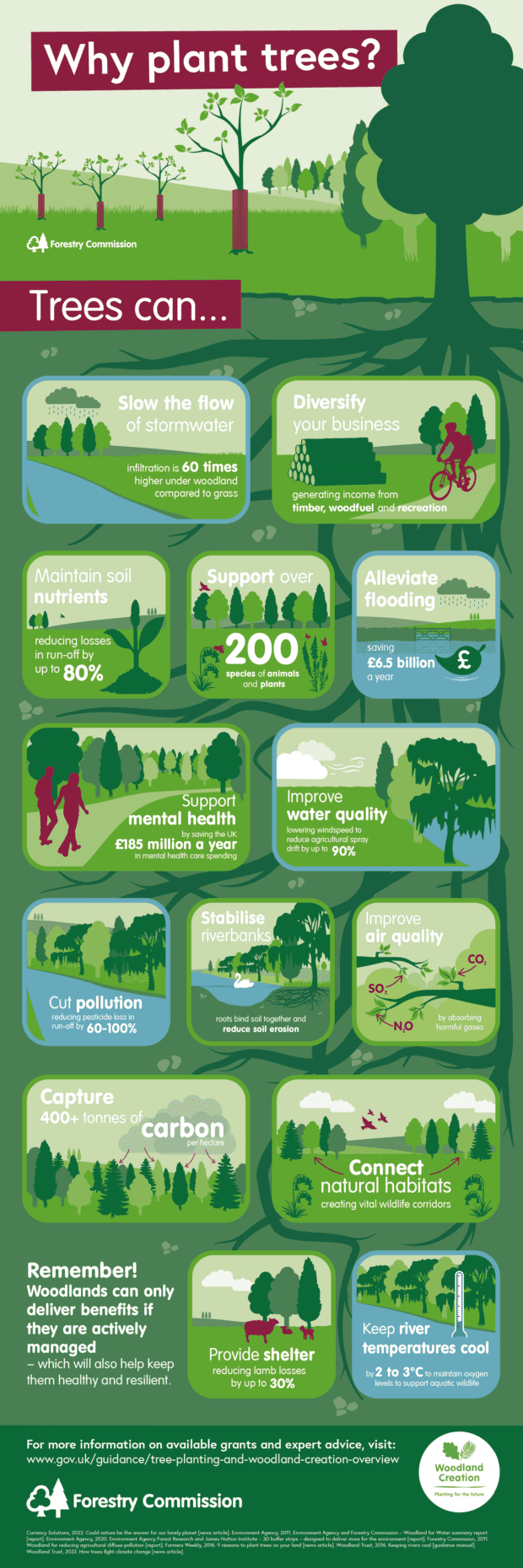Planting trees can help the environment in many ways, including:
Air quality
Trees absorb harmful pollutants and release oxygen through their leaves and bark. In urban areas, they can reduce up to 24% of particulate matter, such as dust and smoke, and absorb gases like nitrogen oxides, ozone, and carbon monoxide.
Climate change
Trees act as carbon sinks, absorbing carbon dioxide (CO2) through photosynthesis and storing it as they mature. A single mature tree can absorb around 21 kilograms of CO2 per year, and forest restoration projects can sequester millions of tonnes of carbon annually.
Water management
Trees help reduce runoff by providing surface area for rainwater to evaporate, and their roots break up the soil to help water infiltrate. This can help prevent flooding and soil erosion, especially during heavy storms.
Wildlife
Trees provide homes for hundreds of species of insects, fungi, mammals, and plants. These species in turn help trees by dispersing seeds, controlling insects, and preventing overgrowth.
Trees can also benefit people, including:
Mental health
Being around trees can reduce cortisol levels in the brain, which can help reduce symptoms of stress and anxiety. People are also more likely to go outside and exercise if there are trees and green spaces nearby.
Social benefits
Trees can be planted as living memorials or to commemorate events, and hospital patients have been shown to recover more quickly when their rooms have views of trees. Children may also retain more information if they spend time outdoors in green spaces.

